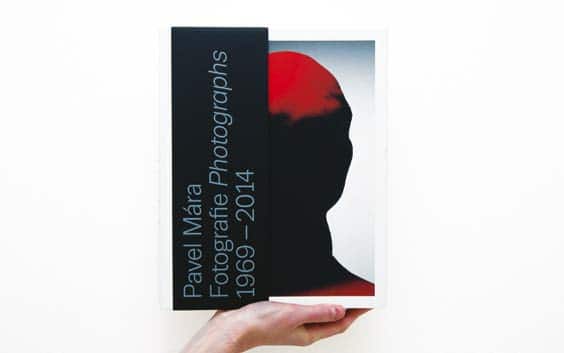Pavel Mára Photographs1969-2014
Last autumn, MARA Publishing, in cooperation with KANT Publishing, released the monograph of one of the most original Czech photographers – Pavel Mára. The more than 300 pages of this publication, prepared with excellent graphics and in very good print quality, present not only reproductions of all of Mára’s most important works, but also the artist’s complete biography and bibliography.
Pavel Mára became a part of the world of Czechoslovak photography during the second half of the 1970s and, from the very start, his works escaped the bounds of the local context and the accepted concept of artistic photography. Most importantly, he transformed each shot into an original artefact or series of artefacts that can never be adequately reproduced, as you have to be familiar with the original photos. Amongst other things, they were unique not just because of the large dimensions he used, unusual for that time, but also because of the way they were adjusted and, later, the methods of installation prepared by the artist for specific spaces. The use of colour photography was also not customary and, as we will find out in the text, was just finding its way into the world’s exhibition halls. However, what may be most important are Mára’s precisely thought out strategic depictions, which frequently affect the very core of the medium and its ability to capture and reproduce the surrounding world. Mára’s creative methods, his approach to images and the photographic medium in general are clarified in the text written by the art historian Antonín Dufek. In short, he focuses on all of the photographer’s important sets of work, explaining them from the perspective of the time during which they were created as well as from other aspects. In his study he specifies a broad range of necessary factual data that shed light on how, where and in which form each work has been exhibited. I think that without this commentary Mára’s work can never be fully understood.
The publication does not present the perspective of just Antonín Dufek. We can obtain a multi-dimensional image about the work and the development in his perception of art history from the texts at the end of the book, which were written about Mára by Ján Šmok, Jan Kříž, Stanislav Ulver, and Anna Fárová as well as those by Lucia L. Fišerová and Tomáš Pospěch, who represent the generation of young theoreticians. With the publication of this monograph, Mára’s work has received an unusually comprehensive evaluation and, in a certain way, some closure. It will be interesting to see how the photographer will supplement this image of his work in the future. I very much hope that this ‘optical’ closure is not in any way an overall final one.
#27 cars
Archive
- #45 hypertension
- #44 empathy
- #43 collecting
- #42 food
- #41 postdigital photography
- #40 earthlings
- #39 delight, pain
- #38 death, when you think about it
- #37 uneven ground
- #36 new utopias
- #35 living with humans
- #34 archaeology of euphoria
- #33 investigation
- #32 Non-work
- #31 Body
- #30 Eye In The Sky
- #29 Contemplation
- #28 Cultura / Natura
- #27 Cars
- #26 Documentary Strategies
- #25 Popular Music
- #24 Seeing Is Believing
- #23 Artificial Worlds
- #22 Image and Text
- #21 On Photography
- #20 Public Art
- #19 Film
- #18 80'
- #17 Amateur Photography
- #16 Photography and Painting
- #15 Prague
- #14 Commerce
- #13 Family
- #12 Reconstruction
- #11 Performance
- #10 Eroticon
- #9 Architecture
- #8 Landscape
- #7 New Staged Photography
- #6 The Recycle Image
- #5 Borders Of Documentary
- #4 Intimacy
- #3 Transforming Of Symbol
- #2 Collective Authorship
- #1 Face

